Cartography is the art and science of making maps. Humans have been creating maps since ancient times: the earliest map is thought to be a schematic of the night sky found in the caves of Lascaux, France, dating from 16,500 BC. While we often consider maps to be objective representations of physical space, they are laden with subjective views of the world. Additionally, maps change over time: borders and boundaries are constantly in flux, shifting along political lines and in response to changes in international relationships.
This excerpt from the site “MoMa Learning. Maps, borders and networks” anticipates and somehow presents the contents investigated in the course of the workshop “Mapping the Intangible”, held in the Azeri capital from 27th to 29th June. An evocative title conveying the theme and key word of the initiative: mapping. The workshop curated by Juan Sandoval (director of Cittadellarte’s Art Office) supplied in fact the instruments to represent the relationships between community and territory, subject and social context, artist and spectator through the realization of maps referring to specific territories. The initiative is part of the Yarat Contemporary Art Space’s project “ARTIM Lab”.
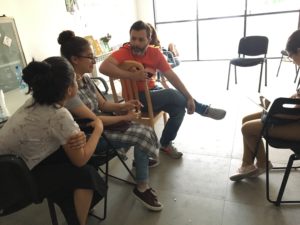
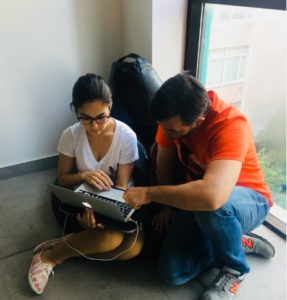
(The first phases of the workshop)
The programme of the workshop and the participants
The first phase of the workshop centred on a debate among the artists led by Sandoval: they were all invited to discuss the meanings of concepts commonly used in contemporary art, such as participation, public and context. In the second phase, the participants worked on the their redefinition. In conclusion, each participant, using the instruments of their artistic language, presented a map of the intangible realized according to their personal vision of the relationship between artists and the social environments in which they operate. All the works were displayed in a final exhibition.
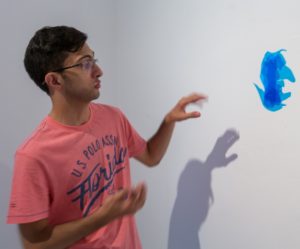

(Yunis Novruz and his work Global Warming in the Caspian Sea)
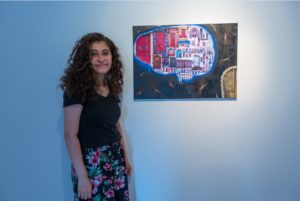
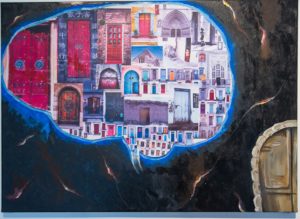
(Tarane Quliyeva, with her work Untitled)
Here are the participants in the workshop with the names of their works/maps: Sofiya Ahadova, with Stray Animals (installation) 2018; Yunis Novruz, with Global Warming in the Caspian Sea (installation); Gunay Aliyeva, with Cultural Society (print on paper); Shalala Salamzadeh with Unknown Territory (video); Tarane Quliyeva, with Untitled (collage); Nazrin Musayeva, with Geolocation of your Smell (installation). Sultan Babazade, Masuma Hajieva, Aytac Hafizova and Nigar Tahmazova also took part in the activity.
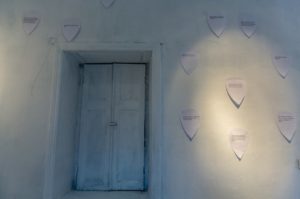
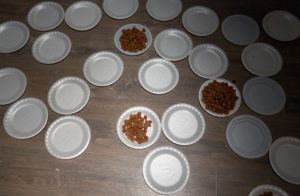
(From the left: Geolocation of your Smell; Stray Animals)


(From the left: Unknown Territory; Cultural Society)
Juan Sandoval’s comments
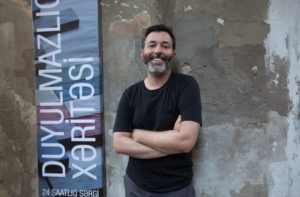 “Geographical maps, urban maps, mental maps, diagrams, relational schemes etc. are instruments that are part of the grammar of the contemporary artist, – argues Sandoval – both because they offer a reading of the territory and because they contain a historical, political or social meaning. The map places the viewer in a specific socio-temporal context and the artist takes advantage of this quality to use it as a compass that leads into the conceptual territory of their artistic creation. The mapping of the intangible networks present in a territory and of the relationships that are activated in the processes of social and urban transformation is one of the instruments that Cittadellarte is developing as a component of demopraxy, together with the Forums and the Rebirth/Third Paradise Working Sites”.
“Geographical maps, urban maps, mental maps, diagrams, relational schemes etc. are instruments that are part of the grammar of the contemporary artist, – argues Sandoval – both because they offer a reading of the territory and because they contain a historical, political or social meaning. The map places the viewer in a specific socio-temporal context and the artist takes advantage of this quality to use it as a compass that leads into the conceptual territory of their artistic creation. The mapping of the intangible networks present in a territory and of the relationships that are activated in the processes of social and urban transformation is one of the instruments that Cittadellarte is developing as a component of demopraxy, together with the Forums and the Rebirth/Third Paradise Working Sites”.
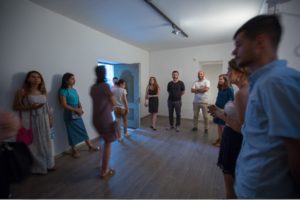
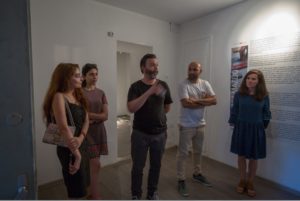
The collaboration between Yarat and Cittadellarte
The initiative is part of the collaboration between Yarat Contemporary Art Space and Cittadellarte, developed thanks to Paolo Naldini, director of Cittadellarte, who has curated the partnership between the two artistic foundations, besides leading workshops and conferences on art and social transformation in the Azeri capital. Here is part of the programme of this partnership: the artistic residency of Sayara Huseynli and Fidan Amrahli-Seyidbeyli (Yarat’s head of education and programs coordinator respectively) at Fondazione Pistoletto; Michelangelo Pistoletto’s personal exhibition “Do it”, which was opened by Paolo Naldini and ran from 1st April to 10th June at Yarat Contemporary Art Space (the Azeri artistic organization’s main exhibition space in Baku’s National Flag Square); a series of lectures on design and contemporary art by six experts selected by Cittadellarte held in Baku (thanks to the support of the city’s Italian Embassy); a scholarship for artistic residencies in Italy and Azerbaijan, which would take an Italian artist to Baku and an Azeri artist to Biella, allowing them to develop their practices in relation to Cittadellarte’s artistic ethics and the Italian – and in particular Biellese and Northern Italian – cultural context. Next year’s exchange artists have in fact recently been selected: Giuditta Vendrame and Leyli Gafarova.

